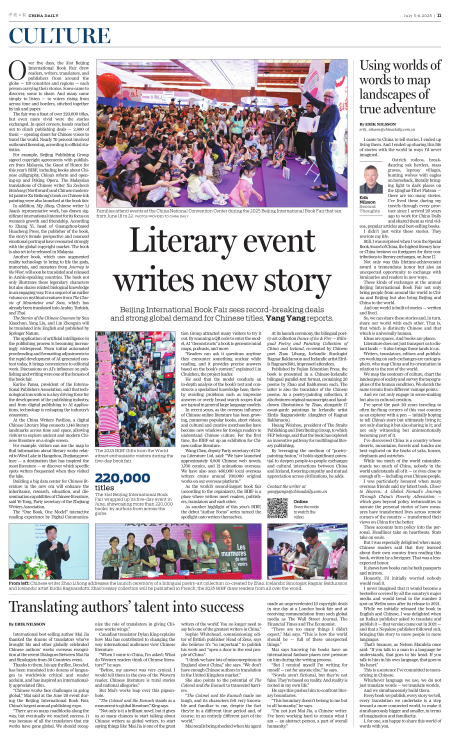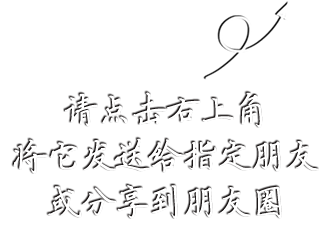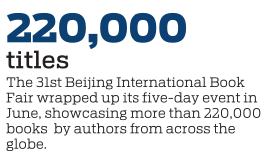

Online Scan the code to watch the video.
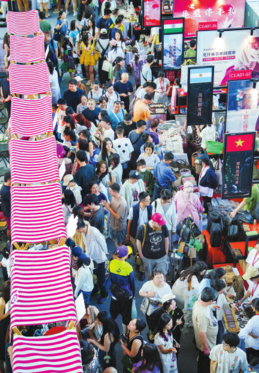
The 2025 BIBF Gifts from the World attract enthusiastic visitors during the five-day book fair.
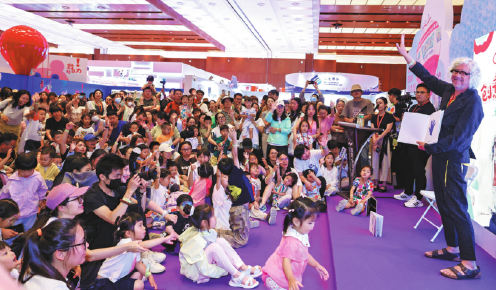
Families attend events at the China National Convention Center during the 2025 Beijing International Book Fair that ran from June 18 to 22.
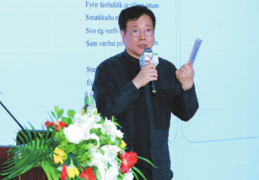
Chinese writer Zhao Lihong addresses the launch ceremony of a bilingual poetry-art collection co-created by Zhao, Icelandic Sinologist Ragnar Baldursson and Icelandic artist Eirdis Ragnarsdotti.

Zhao's essay collection will be published in French.
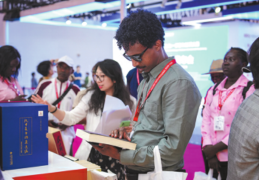
The 2025 BIBF draw readers from all over the world.
Over five days, the 31st Beijing International Book Fair drew readers, writers, translators, and publishers from around the globe — 110 countries and regions — each person carrying their stories. Some came to discover, some to share. And many came simply to listen — to voices rising from across time and borders, stitched together by ink and paper.
The fair was a feast of over 220,000 titles, but even more vivid were the stories exchanged. In quiet corners, hands reached out to clinch publishing deals — 2,800 of them — opening doors for Chinese voices to travel the world. Nearly 70 percent involved outbound licensing, according to official statistics.
For example, Beijing Publishing Group signed copyright agreements with publishers from Malaysia, the Guest of Honor for this year's BIBF, including books about Chinese calligraphy, China's reform and opening-up and Peking Opera. The Malaysian translations of Chinese writer Xu Zechen's Beishang (Northward) and Chinese modernist painter Xu Beihong's book on Chinese ink painting were also launched at the book fair.
In addition, My Altay, Chinese writer Li Juan's representative work, has drawn significant international interest for its focus on women's growth and friendship. According to Zhang Yi, head of Guangzhou-based Huacheng Press, the publisher of the book, the story's female perspective and nuanced emotional portrayal have resonated strongly with the global copyright market. The book is also set to be released in Malaysia.
Another book, which uses augmented reality technology to bring to life the gods, immortals, and monsters from Journey to the West, will soon be translated and released in Arabic-speaking countries. The book not only illustrates these legendary characters but also shares related biological knowledge in an engaging way. It is a sequel of an earlier volume on mythical creatures from The Classic of Mountains and Seas, which has already been translated into Arabic, Turkish, and Thai.
The Stories of the Chinese Gnomon by Sun Xiaochun, Yang Liu, and Lin Zhengxin will be translated into English and published by Springer Nature.
The application of artificial intelligence in the publishing process is becoming increasingly widespread. From initial automated proofreading and formatting adjustments to the rapid development of AI-generated content today, it brings convenience to editorial work. Discussions on AI's influence on publishing and writing were one of the focuses of the book fair.
Karine Pansa, president of the International Publishers Association, said that technological innovation is a key driving force for the development of the publishing industry, and from digital publishing to AI applications, technology is reshaping the industry's ecosystem.
At the China Writers Pavilion, a digital Chinese Literary Map connects 1,148 literary landmarks across time and space, allowing visitors to explore ancient and modern Chinese literature on a single screen.
For example, visitors can use the map to find information about literary works related to West Lake in Hangzhou, Zhejiang province — a destination that has inspired the most literature — or discover which specific spots writers frequented when they visited the lake.
Building a big data center for Chinese literature in the new era will enhance the inheritance, research, education, and dissemination capabilities of Chinese literature, said Ye Tong, Party secretary of the Zhejiang Writers Association.
The "One Book, One Model" interactive reading experience by Digital Communication Group attracted many visitors to try it out. By scanning a QR code to enter the model, AI "deconstructs" a book to generate mind maps, podcasts, and more.
"Readers can ask it questions anytime they encounter something unclear while reading, and it provides precise answers based on the book's content," explained Lin Chuizhen, the project leader.
He said that the model conducts an in-depth analysis of the book's text and constructs a specialized knowledge base, thereby avoiding problems such as imprecise answers or overly broad search scopes that are typical in general large language models.
In recent years, as the overseas influence of Chinese online literature has been growing, numerous popular books, short videos, and cultural and creative merchandise have become new windows for foreign readers to understand Chinese culture. For the first time, the BIBF set up an exhibition for Chinese online literature.
Wang Chen, deputy Party secretary of China Literature Ltd, said: "We have launched approximately 6,800 Chinese web novels, 1,700 comics, and 12 animations overseas. We have also seen 460,000 local overseas writers create around 700,000 original works on our overseas platform."
As the world's second-largest book fair (according to the organizers), the BIBF is a place where writers meet readers, publishers, translators and each other.
As another highlight of this year's BIBF, the debut "Author Focus" series turned the spotlight onto writers themselves.
At its launch ceremony, the bilingual poetry-art collection Dance of Ice & Fire — Bilingual Poetry and Painting Collection of China and Iceland, co-created by Chinese poet Zhao Lihong, Icelandic Sinologist Ragnar Baldursson and Icelandic artist Eird-ís Ragnarsdótti, impressed attendees.
Published by Fujian Education Press, the book is presented in a Chinese-Icelandic bilingual parallel-text format, containing 20 poems by Zhao and Baldursson each. The latter is also the translator of the Chinese poems. As a poetry-painting collection, it also features original manuscripts and handdrawn illustrations by Zhao, alongside 17 avant-garde paintings by Icelandic artist Eirdis Ragnarsdottir (daughter of Ragnar Baldursson).
Huang Weizhou, president of The Straits Publishing and Distributing Group, to which FEP belongs, said that the book has explored an innovative pathway for multilingual literary publishing.
By leveraging the medium of "poetry-painting fusion," it holds significant potential to deepen people-to-people exchanges and cultural interactions between China and Iceland, fostering empathy and mutual appreciation across civilizations, he adds.
Contact the writer at yangyangs@chinadaily.com.cn
